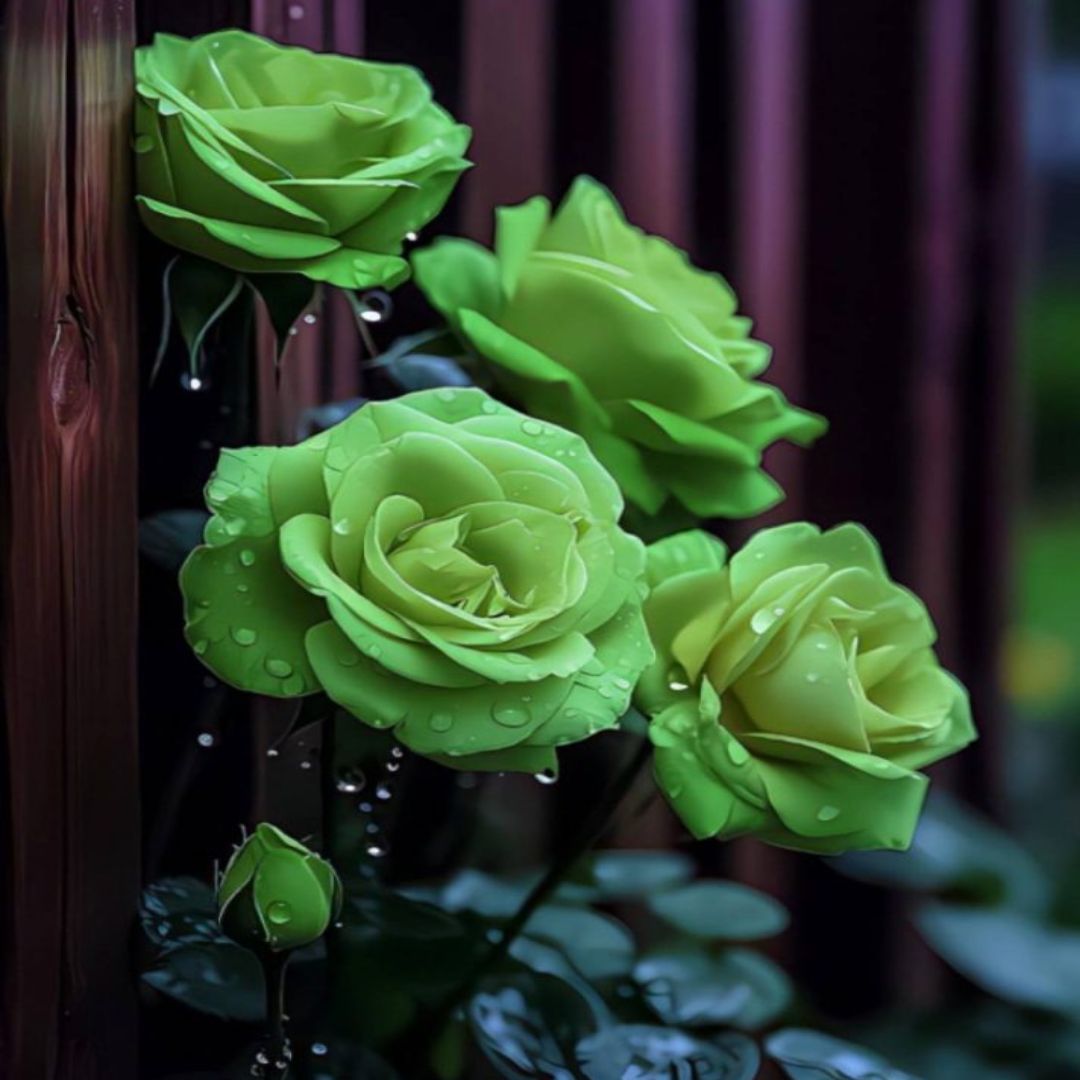Follow our guide to making the most of your window boxes and your house will soon be the envy of the whole street
13 March 2023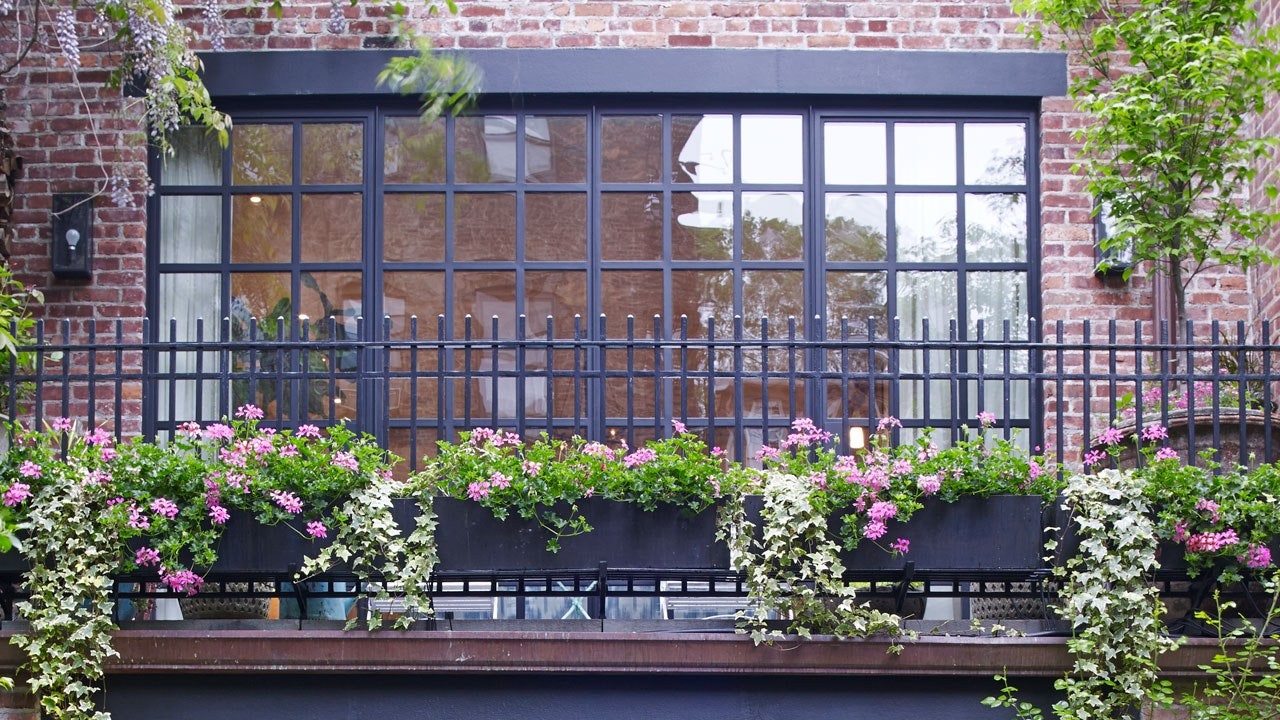
Window boxes and troughs are the perfect way to dress your house, but it’s not as easy as simply planting them up and forgetting about them. Even before you start putting plants into soil, it’s well worth thinking about the practicalities. If you can’t easily and regularly water your plants, for example, consider installing an irrigation system or buying self-watering window boxes (try lechuza.co.uk). Your choice of compost is also important, as many multi-purpose composts are too light and will dry out in a flash, so choose a soil-based compost such as John Innes No. 3 or make your own mix from topsoil and multi-purpose compost.
To begin, consider where your window boxes are. If they are on a north-facing wall then the range of plants available to you will be restricted; in full sun or partial shade the choice will be much wider. Next, think about whether you want seasonal displays using annuals and bulbs – perhaps changing them two or three times a year – or whether you’d prefer evergreen or perennial displays that are more permanent (and easier to care for, usually). A combination of structural evergreens or perennials padded out with annuals is often the best solution, though you may even want to try fruit, vegetables or herbs. Whatever you decide, it’s best to choose low-maintenance plants that hold their colour or structure for as long as possible.
In terms of design, work out what effect you want, whether traditional and symmetrical or loose and naturalistic, and think about plant heights carefully. You’ll need one or two slightly taller plants to create visual interest, but don’t choose excessively tall plants that risk obscuring the view from the window the box is sitting under. Choose a range of plants that will give you different shapes and textures for maximum impact, making sure that you have several from the following categories:
Focal points
These are the flowers that are going to be the show-stoppers of your container, and if your window box is in a sunny spot, there will be plenty of plants to consider, from flamboyant pelargoniums to colourful cosmos, and you can choose different plants to shine in each season.
Fillers
The fillers are light, airy plants that provide softness to counteract the more flamboyant plants in the container. Examples include Gypsophila elegans, Gaura lindheimeri and Gilenia trifoliata and they typically have small, floaty flowers that can be dotted throughout the container to provide continuity. You can also use soft grasses such as Stipa tenuissima or Melica uniflora.
Trailers
Adding a few trailing plants will soften the edges of your window boxes and create a lusher, more flower-filled look. Choose plants such as trailing ivy, Erigeron karvinskianus and annual lobelias or petunias.
Structural plants
If you want an elegant, low-maintenance minimalist look, these are the plants that provide evergreen structure throughout the year. Box balls are a classic choice but can be risky due to blight and box moth. Good alternatives include Euonymus japonicus ‘Jean Hugues’, dwarf hebes, or lavender. If you prefer a more exotic look you could try a cordyline such as C. obtecta ‘Superstar’ as a central focal point.
Planting suggestionsShady Green & White Perennials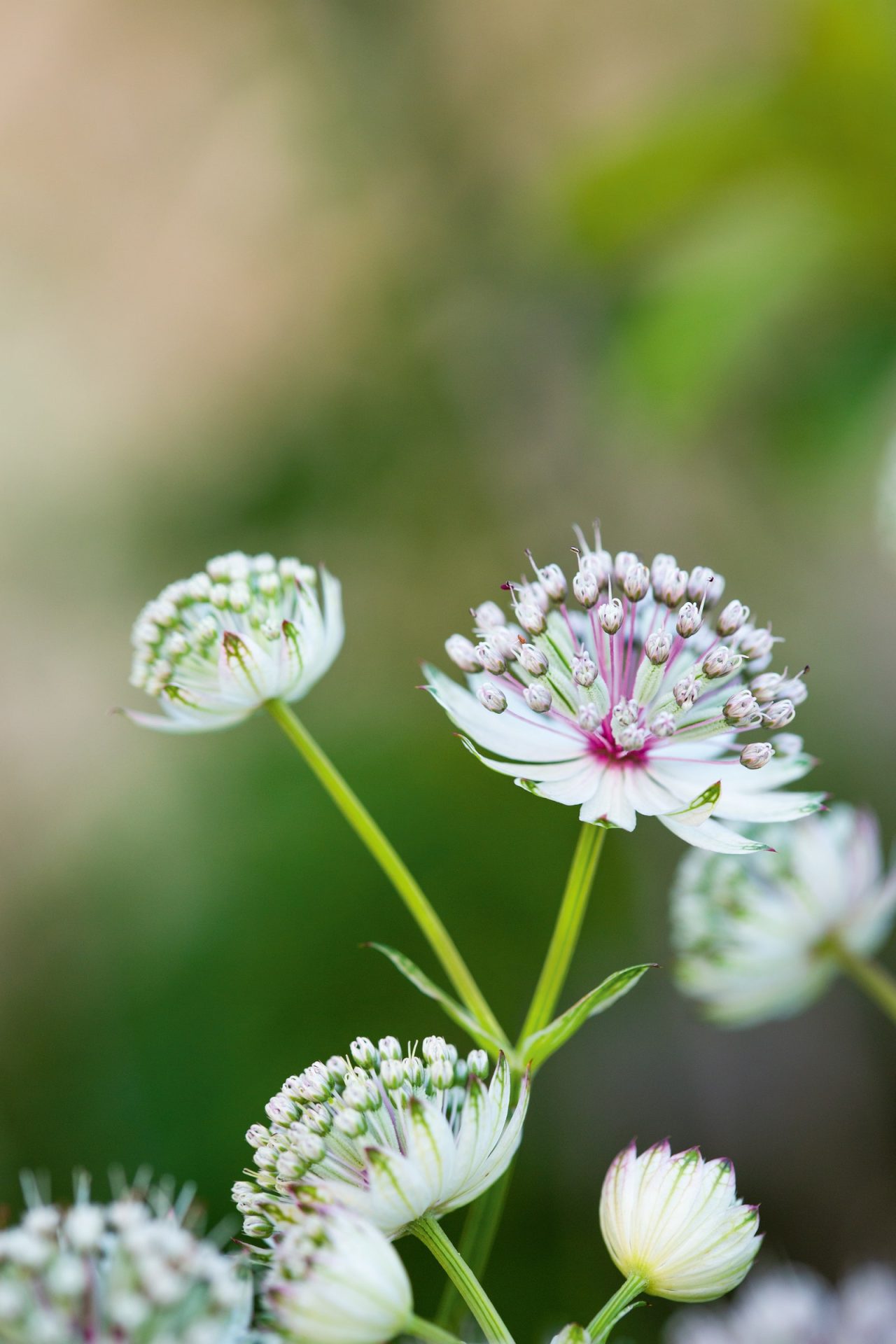
Astrantia major
Rachel Warne
- Skimmia japonica ‘White Dwarf’ (evergreen structural)
- Melica uniflora (perennial grass filler)
- Hedera helix ‘Eva’ (trailing)
- Astrantia major ‘Shaggy’ (focal point perennial for summer)
- Anemone x hybrida ‘Honorine Jobert’ (focal point perennial for autumn)
- Helleborus x ericsmithii ‘Winter Moonbeam’ (focal point perennial for winter)
Sunny Silver & White for Summer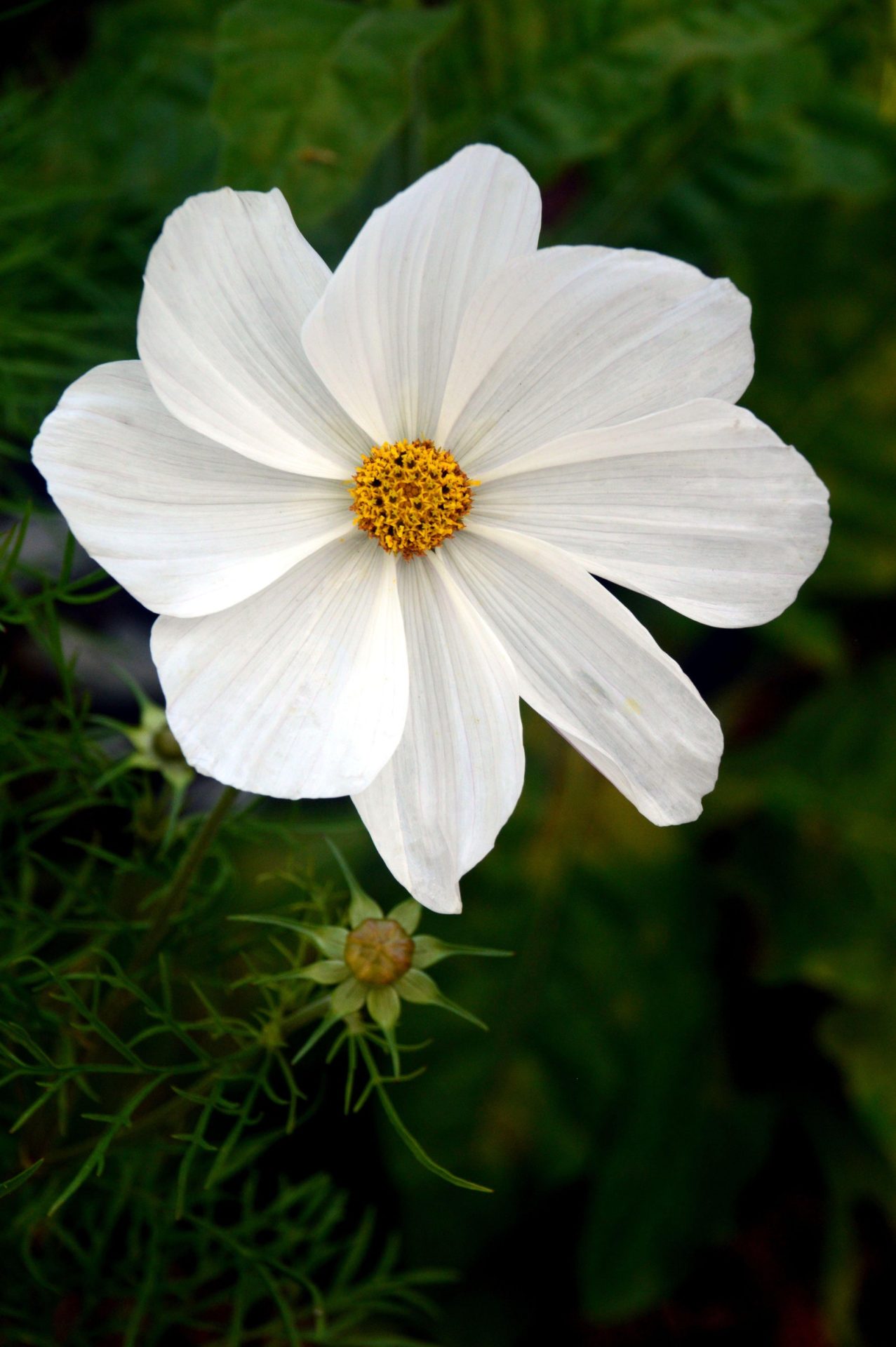
WATCH
How to design a warm and colourful family room
- Euphorbia characias ‘Silver Swan’ (evergreen structural)
- Stipa tenuissima (perennial grass filler)
- Verbena ‘Quartz XP Silver’ (annual filler)
- Helychrysum petiolare (annual trailing for summer)
- Cosmos bipinnatus ‘Sonata White’ (annual focal point for summer)
- Osteospermum ‘Akila White Purple Eye’ (annual focal point for summer)
Sunny Naturalistic for Summer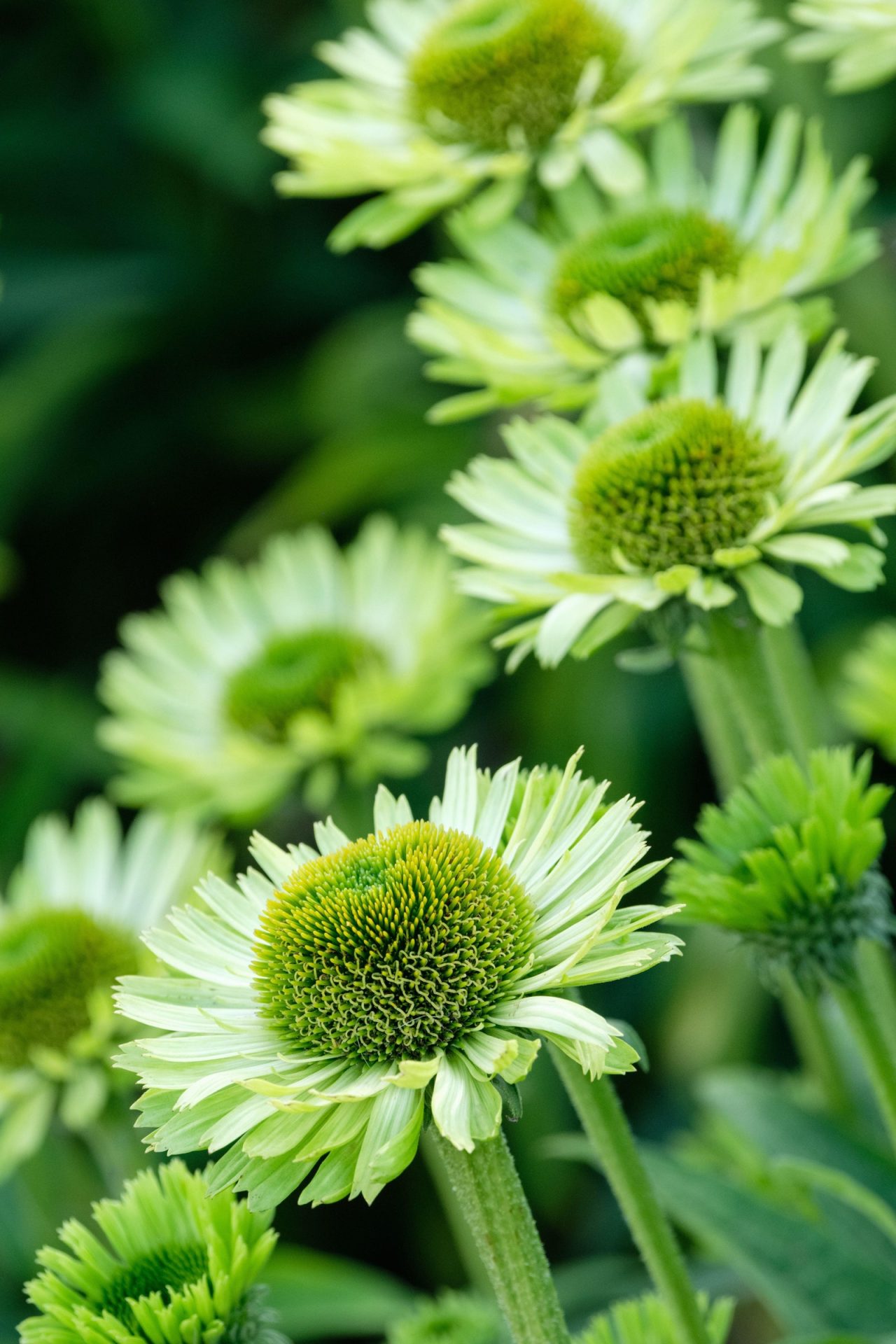
- Lavandula angustifolia ‘Hidcote’ (evergreen structural)
- Pennisetum alopecuroides ‘Hameln’ (perennial grass filler)
- Erigeron karvinskianus (perennial trailing for summer)
- Orlaya grandiflora (annual filler summer)
- Echinacea purpurea ‘Green Jewel’ (perennial focal point for summer)
- Symphyotrichum ‘Little Carlow’ (perennial focal point for autumn)
Formal Green & White with Bulbs
- Buxus sempervirens or Taxus baccata balls (evergreen structural)
- Tulipa ‘Spring Green’ (focal point bulb for spring)
- Allium nigrum (focal point bulb for summer)
- Acidanthera murielae (focal point bulb for late summer)
Edible & Ornamental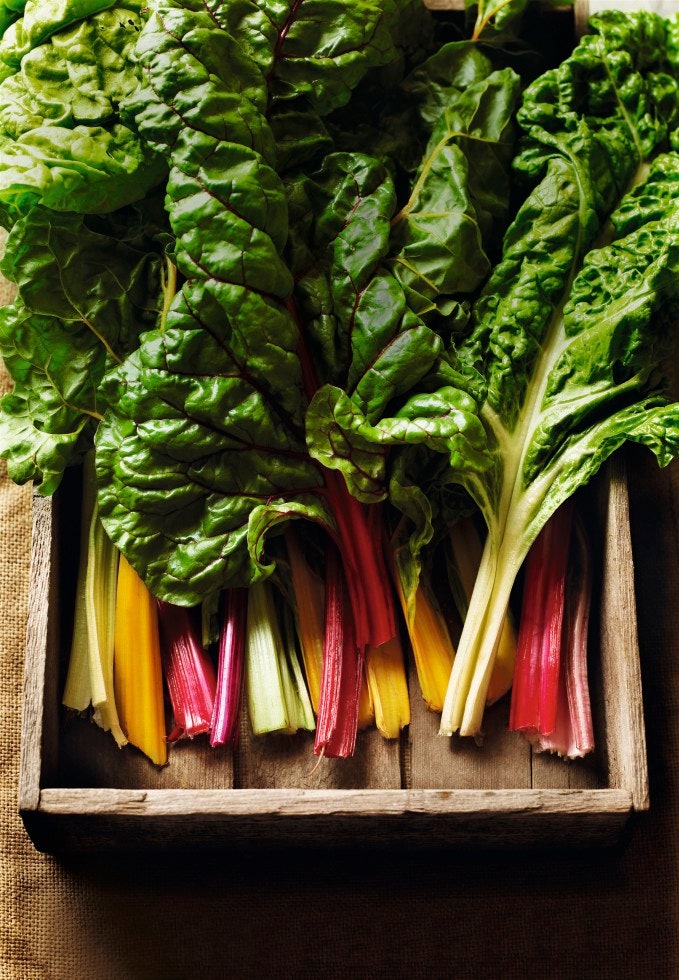
- Rainbow chard (structural)
- Purple sage (structural)
- Cherry tomatoes (trailing varieties)
- Flat leaf parsley (filler)
- Basil (filler)
- Nasturtiums (trailing)


